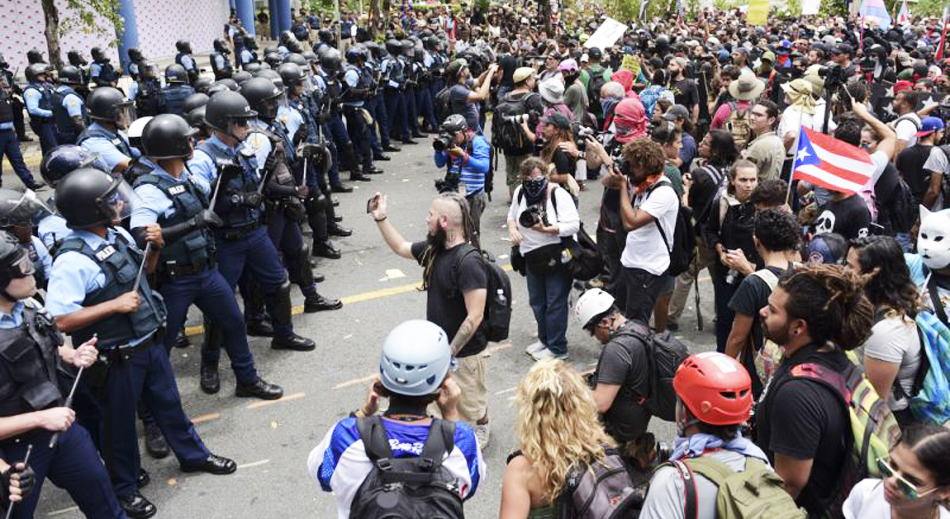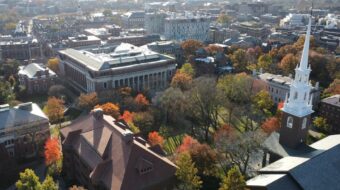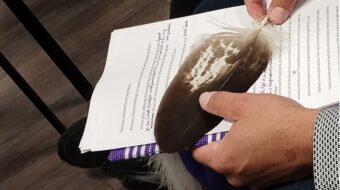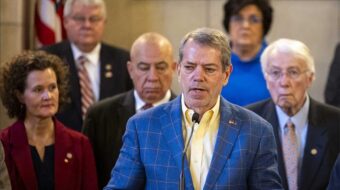
SAN JUAN – On the U.S. mainland, teachers have been marching, organizing at the grassroots, for more money for schools. On Puerto Rico, it was the students – 94 percent of them.
That’s how many of the island’s students stayed out of class on May Day, the commonwealth’s Education Secretary admitted. The students were part of a mass nationwide demonstration – adults included – against austerity measures that include planned closing of 266 schools.
And while not all the students headed for the Puerto Rican capital, approximately 50,000 people showed up in the streets of San Juan to demand the fiscal belt-tightening end in the depression-plagued commonwealth.
That austerity comes from a fiscal control board established by the far-away GOP majority in the U.S. Congress in 2016.
The board has forced the school closures, wants Puerto Rico’s GOP-leaning governor, Ricardo Rossello, to privatize and charterize many of the remaining schools, demands the sale of commonwealth-owned utilities and ordered Puerto Rico to divert money from schools, hospitals, public services, salaries and hurricane rebuilding to bondholders on Wall Street. The board also ordered Rossello to impose anti-worker labor reforms.
The marchers — including energy workers and members of the island’s teachers union — demanded the board reverse those moves and then shut down, turning control of Puerto Rico back to its people.
The Puerto Rican student protests were organized from the grass roots. The Puerto Rico Federation of Teachers, an AFT affiliate, and the commonwealth’s pro-independence party (PIP) eagerly jumped on board. Other Puerto Rican workers and unionists also joined the May Day march. The teachers have continued protesting, in other ways, since May 1.
But that day, the commonwealth’s Education Secretary admitted, only 74.2 percent of the island’s teachers showed up, along with 87 percent of support personnel, 93 percent of principals, 63 percent of central administrators and 6.2 percent of the students.
Authorities reacted by sending masses of riot police into downtown San Juan and elsewhere. They tossed tear gas and beat and arrested 22 people, including two student leaders, University of Puerto Rico students Angelica Questel, 19, and her brother Alfonso, 21., their father, Eddie, told Noticentro.
“They threw my daughter on the floor and they split her head, and my son, who went to defend her, also arrested him,” Questel added. Hundreds of university students also protested, in Rio Piedras.
The protests didn’t stop after May Day. Labor Notes reported on May 24 Puerto Rican teachers are boycotting orders to give students standardized tests “and even teaming up with parents to occupy schools.”
Puerto Rican Teachers President Mercedes Martinez explained the standardized test scores would determine which schools would be privatized, with the first 10 percent of the commonwealth’s 1,100 schools to be privatized and turned into charter schools in August.
“No testing, no scores, no information, no charter,” she told a Labor Notes interviewer.
“The privatization attempts are attacks against the whole working class,” Martinez added. “We are joining forces — public sector unions, private sector unions, community groups, and more — and meeting on a weekly basis, working together to fight back.”
“We’ve long pushed” Puerto Rico Education Secretary Julia “Keleher to conduct a thorough and thoughtful analysis of the schools she wants to close and the consequences of closing them,” AFT President Randi Weingarten said after Keleher’s closure announcement just before May Day.
“We have raised these concerns over and over, but they’ve been ignored. Now the Secretary is suddenly pretending she is listening to parents and educators, but it’s clear she’s not serious.”
“A real analysis must be done to measure the impact these closings will have on kids and communities. The right kind of analysis requires knowing what services the school being closed provides, whether other schools in the community have the services students from the closing school will need, whether their transportation and other needs can be met, and what the stakeholders — teachers, parents and mayors — think is best for their community,” Weingarten concluded.












Comments